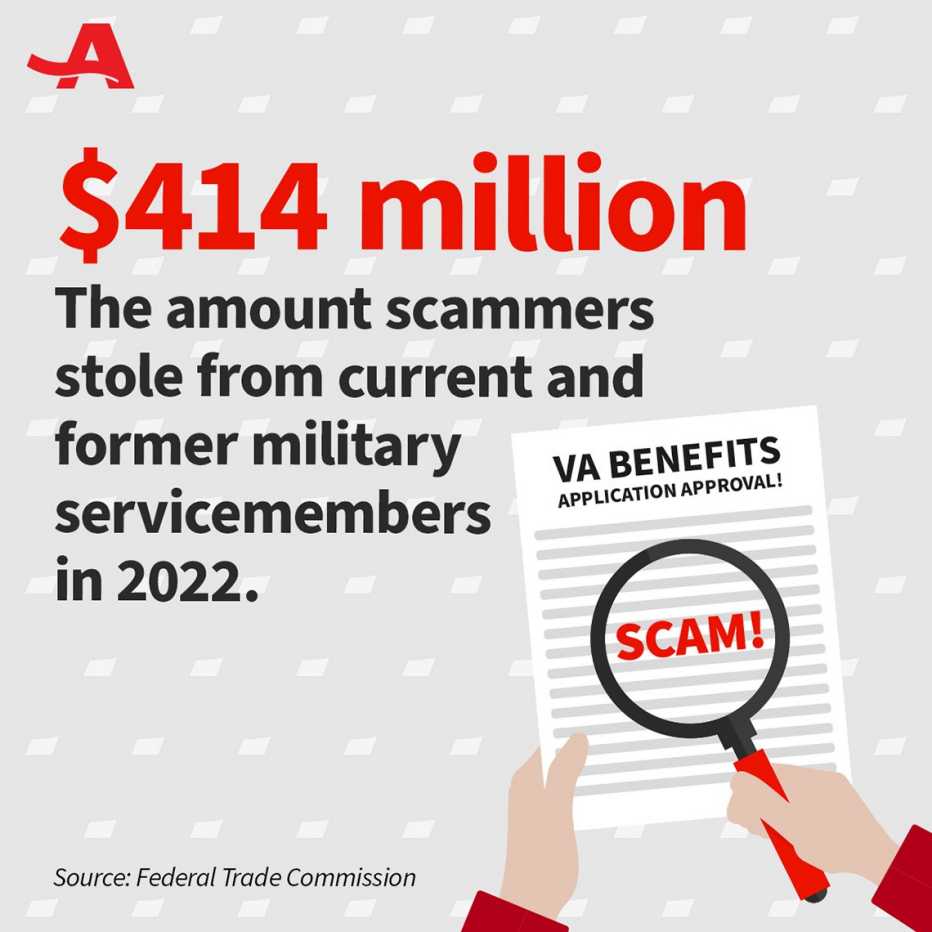Staying Fit


Con artists stole $414 million from veterans, military members and their spouses last year, over $140 million more than they did in 2021, according to data released from the Federal Trade Commission (FTC).


Webinar: Top Scams Targeting Veterans in 2023
In response to the skyrocketing losses reported among veterans, service members and their families, AARP is hosting a discussion on how the military community can stay safe from con artists. Join us, alongside experts from the United States Postal Inspection Service (USPIS) and the Federal Trade Commission (FTC), to discuss the latest data and fraud trends targeting veterans.
Register here for the webinar on May 24 at 3 p.m. ET.
In the meantime, visit the AARP Veterans Fraud Center to familiarize yourself with free resources to keep your finances secure.
Based on reports submitted by consumers last year, the number of fraud attacks against the military community actually fell by 16 percent, the Consumer Sentinel Network Data Book 2022 found. However, 31 percent of those 93,124 fraud attacks resulted in a financial loss, a 5 percent increase from the previous year, which accounted for the jump in losses. Victims within the military community continue to report losing more money than their civilian counterparts, with a median loss of $765, compared with $650.
Investment fraud causes greatest individual loss
Like civilians, military consumers most commonly reported fraud attacks to the FTC, followed by other problems such as complaints against credit bureaus, bankers and lenders.
Impostor scams, in which a crook poses as someone (or something) else, continued to be the most prevalent form of fraud against military members, costing them more than $164 million. Investment-related fraud — phony opportunities in day trading, bogus commodities and fake investment products — was the third most reported but had the highest percentage of financial loss (77 percent) and the highest median amount of money lost ($5,000) out of the 10 most commonly reported types of fraud.
In total, reports of identity theft decreased 24 percent since 2021, with its most common forms being credit card and bank fraud. Previously, the most common form of identity theft among military members was through fake government documents or benefits fraud, but it was reported 84 percent less often in 2022.
Consumer reports that fell into the FTC’s third, or “other,” category increased 33 percent from 2021, to 65,548 complaints. The top three in this category remained the same: problems involving credit bureaus, banks and lenders, and debt collection.
Veterans likely to be the most targeted
Veterans reported the greatest number of complaints within the military community, followed by active-duty service members, military spouses and dependents, and reserve and National Guard members.

































































More From AARP
9 Military Charities That Help and Honor Veterans
Here’s how you can give back to those who risked everything for our country
6 Biggest Mistakes Veterans Make With Their Money
If you avoid rookie errors, your money can last for decades after your military service
A Survivor’s Guide to Claiming the VA Benefits You’re Owed
The system is complicated. Here’s how to navigate it